
GLP has released a couple of small, yet distinctively different fixtures, in the last six months that pack quite a punch, despite their physical size. PLSN took the liberty of testing them out and are here to let our readers know that they both passed with flying colors and would make a great addition to any designer’s toolbox.
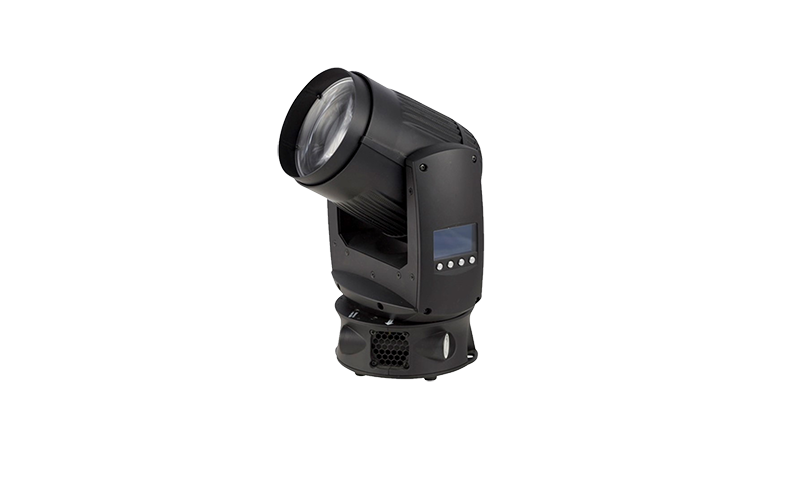
GLP impression FR1
My initial take of the impression FR1 is, “Wow, they took the tiny Atom and fed it some steroids.” The cylindrical head and lens are reminiscent of the Atom, and it has an RGBW light engine, but there’s so much more.
The 60-watt RGBW Osram Ostar LED is twice the wattage and fairly bright to the eye when all four colors are mixed in at full. From 15 feet away at a tight zoom, my meter registers 320 foot candles (350 lux). The field is fairly flat with no noticeable hot spot to my eye. The intensity and strobe functions all work electronically through the LED engine itself and work flawlessly, though the fastest rate is only 10 Hz in the synchronized strobe mode. What does impress me is the straight curve of the dimming. It does not pop all the way out until you reach about 1 on a 256-step DMX channel. What I found useful was that, besides the random and sync strobe modes, the fixture includes a pulse-open and pulse-closed effect modes.
The FR1 has a fast yoke. It pans from zero to 540° in under a second. It tilts a full 220° tilt in under a half-second. These 16-bit resolution motors kick in fast, yet the fixture can stop on a dime. It took me a minute to get the movement effects down on this fixture, as it moves at such a quick speed. This means you won’t be using any global moving effects, but have to make your own on this fixture. Once I dialed in a circle effect, it executed it at an amazing speed. The fixture also has a continuous 360° pan rotation which can go in either direction at any speed.
The zoom on this petite fixture is sick. It goes from a tight four-degree beam to a 34° wash in .2 seconds. I’m able to make an amazing zoom chase that creates a cool effect. I can only imagine what a pod of these fixtures would look like, executing this effect.
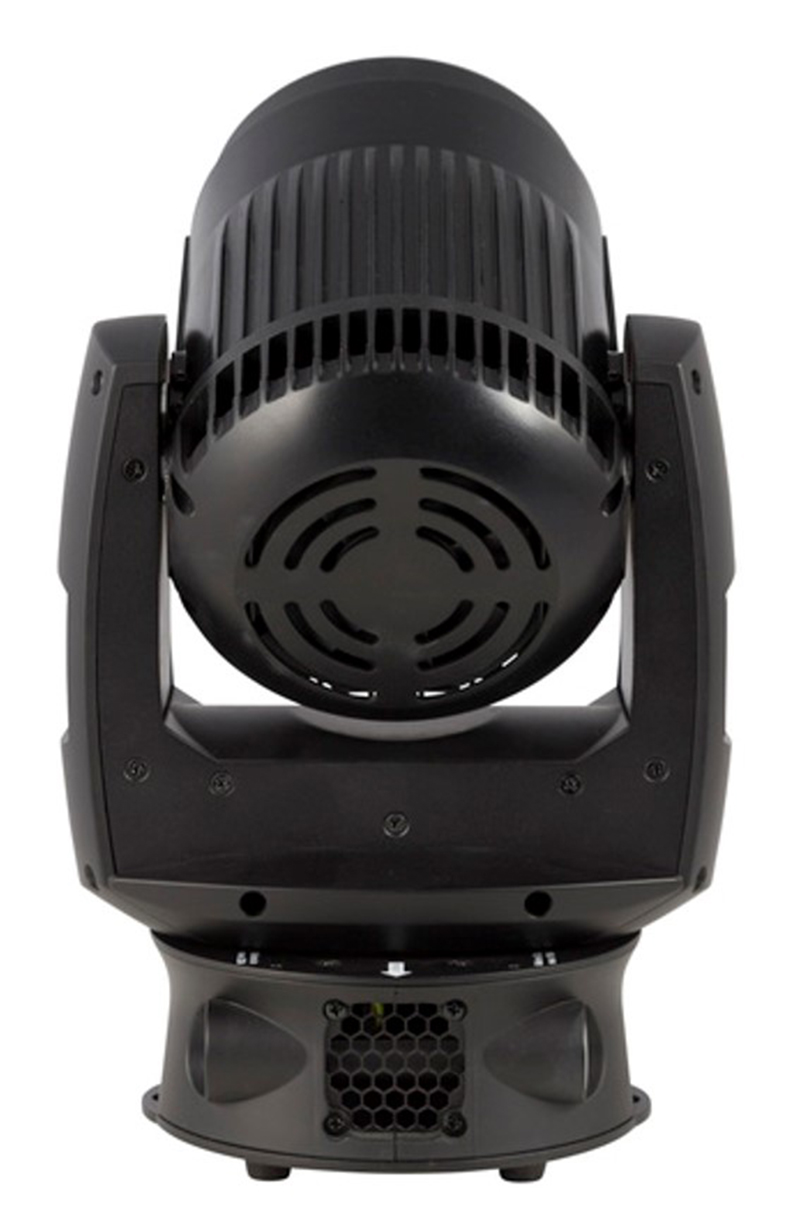
The FR1 has a CRI of 80 with a color temp that can reach 10K with just the white LED on. Fixtures that use RGBW light engines to mix color are great for little punchy lights like these, but one has to remember that color mixing always has an effect on the intensity. For instance, if all RGBW colors were set at zero, there would be no light output. As I bring up the blue channel in percentages, I am not changing the hue of the color itself (which is a beautiful deep blue), just making it brighter. Hence the mixed colors, such as yellow, are brighter than either the green or red colors (the ones used to mix to the color yellow) are alone.
That being said, I can easily mix just about every color, including some decent lavender hues. With RGBW at full, I have a CTB-looking color, as opposed to the pinkish hue most LED fixtures emit. One can mix a CTO filter in easily. With just the white LED on, I can get the fixtures’ color temp down to a decent full CTO. If I mix in the other colors, I get a goldish hue instead of CTO. I do note that the light beam has a bit of halation when colors are mixed. For instance, when I mix a little red in with a full blue color, I will see a red edge surrounding the lavender hue I have just mixed. I look at it as a feature, rather than a fault. There is a virtual color wheel the user can play with. It contains about 13 premixed colors one can easily grab. On the same DMX channel, the user can access premade macros of color rolls through the virtual wheel. Direction and speeds vary from slow fades to quick chases.
At a Glance
GLP impression FR1
I find the fixture to be a great asset one could use in a storefront window as easily as a theater. Banks of them built into pods or straight lines will soon be filling concert arenas as well. Flicker free operation through adjustable PWM ensures great use for cameras. For transport, 8-way and 12-way road cases are available.
PROS: Small, fast moving, punchy beam, fast zoom, continuous pan
CONS: Cannot apply any crossfade time on the virtual color wheel’s colors
SPECS
- Size: 5” x 8” x 14”
- Weight: 8 lbs.
- DMX: 5-pin XLR in/out
- AC: 100-240V (powerCON connector)
- IP Rating: IP20
- Wattage: 65 watts
- Zoom: 4-34°
- MSRP: $1,499
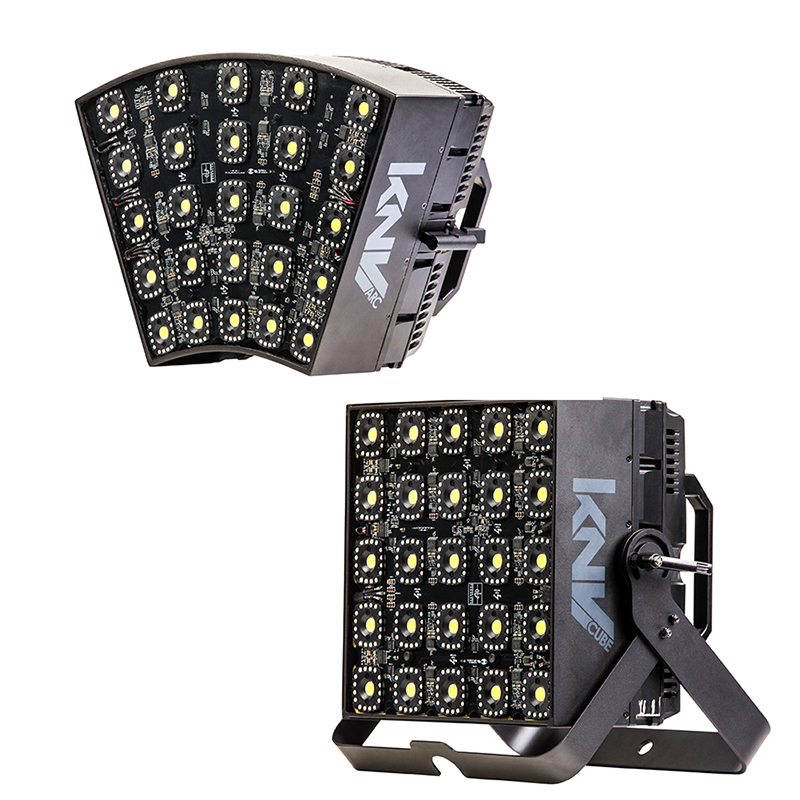
The KNV System
These all-LED hybrid fixtures are different than anything currently on the market. They are strobes, wash fixtures, blinders and, of course individually pixel mappable.
Picture a cube that is about 10 inches per side with a yoke sticking straight out of the back. On the face is a 5-by-5 block matrix of LEDs. Then picture a series of these interlocked together to make a row. These are the KNV Cubes.
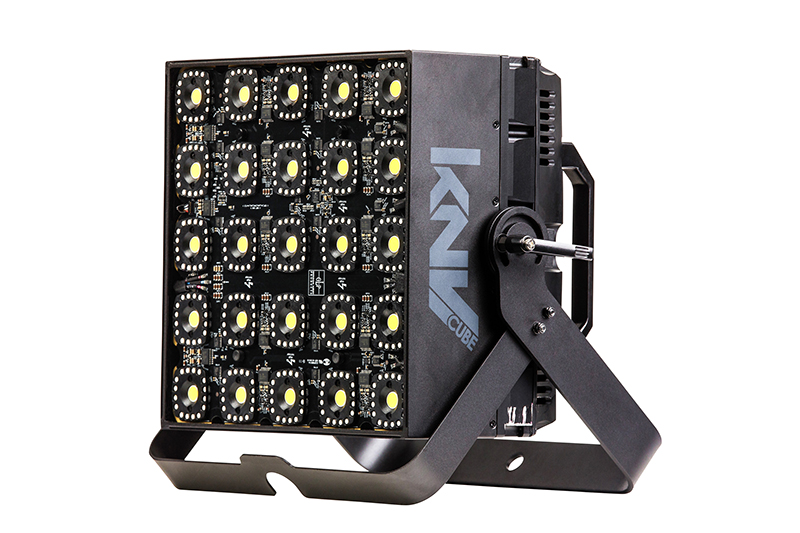
Now picture the same number of pixels fitted into an enclosure that is shaped like an arc, allowing the designer to connect this 45° curved piece to the same interlocking sections of the cube. This is called the KNV Arc fixture.
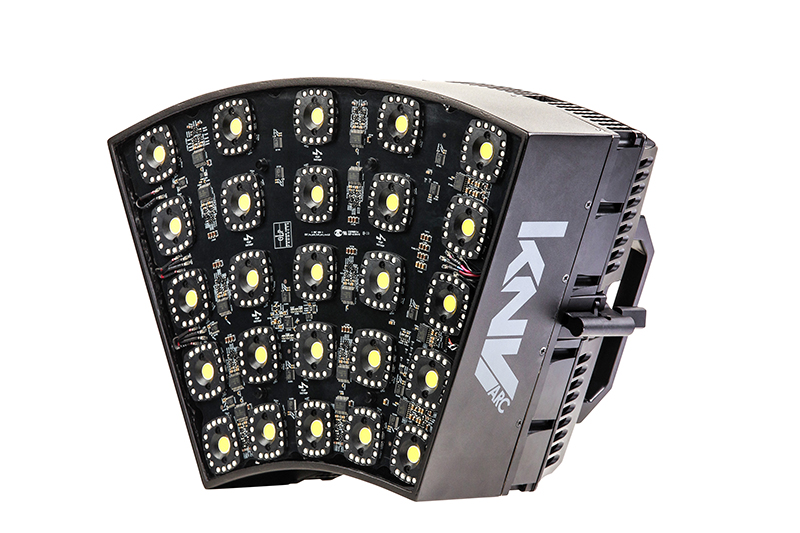
The interlocking system allows the user to make circles, crosses, candy canes, letters and more out of the fixtures. A two-way yoke allows the user to stand them up at any angle on the floor or attach to any truss or pipe. They are sturdily built to handle normal weather conditions with an IP54 rating, weighing in at just over 20 pounds. The fixture can output continually with no fear of thermaling out or overheating due to temperature controlled overheating protection, though I note they list the maximum ambient temperature as 104°F.
GLP is referring to each of the 25 LED sections as Power Pixels. These RGBW pixels are different in the way they are configured. In the center of each power pixel is a 30-watt Hyper White COB LED. This white chip is surrounded by another 16 half-watt RGB LEDs. With all the RGBW LEDs at full, the fixture boasts a 50,000 lumen output while utilizing just 750 watts of power. This will indeed melt an EDM attendee’s face, so to speak.
There are three different control modes — Normal, Compressed or Pixel-Mapping. The fixture accepts DMX through an etherCON in/out. Power from 100-240 VAC is accepted through a Neutrik PowerCON TRUE1 connector.
At a Glance:
KNV System
The KNV makes for a good bit of eye candy. Pixel mappable and interlocking segments make this a great addition to any televised event, concert or corporate event. A six-way road case is available for transport.
PROS: Outdoor rated, major output, clever interlocking system to make shapes, etherCON connections
CONS: None
SPECS
- LEDs: 5×5 Block array
- Colors: RGBW
- Size: Cube, 250mm (9.84”) per side
- Weight: 9.3 kg (20.5 lbs.)
- Output: 50,000 lumens
- Wattage: 750W
- AC: 100-240V
- Protocol: DMX
- MSRP: $4,999 for the Cube or Arc
More information at www.germanlightproducts.com


